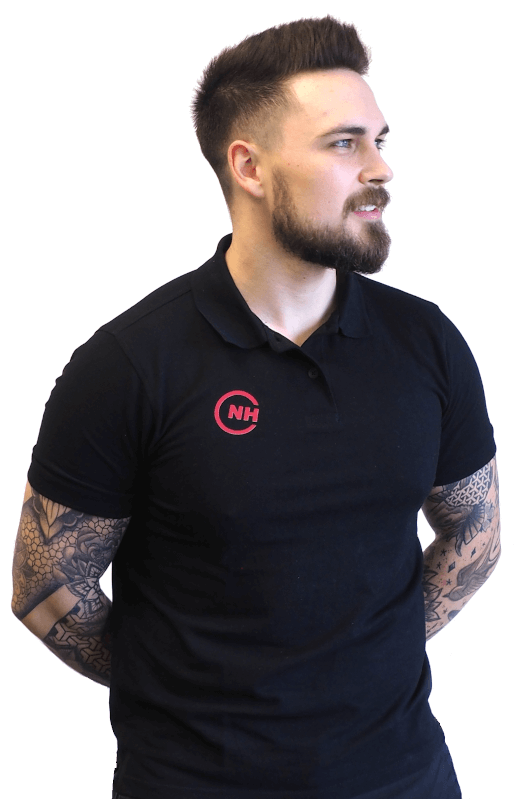O-RING resistance list | Design Simply explained
Everything you need to know about O-ring resistance lists
Which O-ring material is the best answer to the sum of all operating conditions?
The long-term reliability of a seal depends on how well designers answer this question in the design phase.
Of course, seals can be replaced with a different material during maintenance, but this is not always possible without further technical intervention. This is because some O-ring materials require differently designed installation spaces.
This is why the operating conditions should ideally be considered comprehensively from the outset when selecting materials. Contact media play a particularly important role here.
After all, the base polymer essentially determines the media resistance of an O-ring material.
If you want to check a specific media resistance, please use our O-ring resistance list.
Material | Temperature resistance | Chemical resistance | Elasticity |
|---|---|---|---|
FFKM | -40°C to +340°C | High | High |
FEP coated | -60°C to +200°C | High | Medium |
FKM (VITON) | -25°C to +200°C | Medium | High |
PTFE | -250°C to +250°C | High | Low |
NBR | -30°C to +120°C | Low | High |
HNBR | -30°C to +150°C | Medium | High |
EPDM | -45°C to +150°C | Medium | High |
SILICONE | -60°C to +200°C | Low | High |
FVMQ | -60°C to +200°C | Medium | High |
FEPM | -10°C to +200°C | Medium | High |
CR | -40°C to +100°C | Low | High |
ACM | -20°C to +150°C | Medium | High |
REQUEST O-RINGS QUICKLY AND EASILY?
Almost any dimension available
Offer received in record time
No minimum order quantities or minimum item values
One contact for all concerns
#1 What does media resistance mean?
Almost all O-ring materials are characterized by their elastic properties.
They are responsible for ensuring that the sealing elements can flexibly deform in the installation position. As a result, they even out small irregularities in the surface of machine parts.
Finally, the sealing gap can change over time due to mechanical influences, for example.
The operating conditions not only affect the machine parts to be sealed, but also the O-rings themselves. Over time, they can lead to changes in the material composition.
In addition to temperatures, aggressive media in particular cause these processes when they come into contact with the O-rings. Two principles of action can be distinguished:
- Physical change: Media penetrate the sealing material or dissolve out compound components such as plasticizers. These processes change the volume of the O-ring. If the O-ring shrinks, the compression can decrease to such an extent that leaks occur.
- Chemical change: The chemical influence of media relates to the bonds of the polymers. They are what give the O-rings their good sealing properties in their initial state. Aggressive media split these polymer chains. This results in a loss of elastic properties so that the sealing element can no longer adapt flexibly.
Similar to the attack by aggressive media, the effect of temperature can also affect the elastic properties of O-rings.
Excessive heat causes a permanent loss of some of the elastic recovery capacity. This is shown by the compression set after the material has been subjected to defined deformation forces for a period of time under the influence of temperature, relieved and returned to room temperature.
The remaining elasticity is now shown by the extent to which the material returns to its original shape. The smaller the permanent deformation, the more elasticity is retained.
The contact medium and temperature influence each other’s effect on the elastomer material. The temperature can accelerate or slow down the chemical interaction between the medium and the sealing material.
The compression set is tested in air in accordance with the current standard. Other contact media such as oil or steam often lead to completely different results, depending on the media resistance of the material in question.
#2 Resistance profile of the 5 most important O-ring materials
The chemical structure of the base polymer, the cross-linking and the additives: these degrees of freedom determine the resistance of O-rings to media attack.
This is why there are also different levels of media resistance within a base polymer. In EPDM, for example, peroxide cross-linking ensures better durability in contact with water than sulphur cross-linking.
Nevertheless, general resistance profiles can be specified for the most important base polymers.
However, they are only a first point of reference for the technical design, as the media resistance only becomes meaningful in detail in connection with the respective operating temperatures.
Resistance profiles of the most important O-ring materials
FFKM
The special feature of FFKM is its generally high resistance to chemicals. Together with its good mechanical strength, this property makes the material suitable for a wide range of applications. FFKM is currently the sealing material with the most pronounced chemical resistance.
FEP
FEP has a similarly good chemical resistance to FFKM. This makes FEP an inexpensive alternative to cost-intensive FFKM in terms of media resistance. However, FEP cannot cover the entire range of FFKM because its resistance to aggressive media extends over a narrower temperature band. The application range of FEP is between -60 and + 205 °C. FFKM can withstand heat up to over 300 °C.
FKM
FKM shares the polymer base with FFKM, but is only partially fluorinated instead of fully fluorinated like FFKM. Accordingly, the resistance to chemicals is below FFKM. The high-temperature behavior is also less good, so that 200 °C in air represents the permanent maximum. FKM O-rings should not be exposed to temperatures exceeding 120 °C in contact with hot steam.
EPDM
EPDM stands out in particular for its excellent resistance to hot water and steam. The resistance also extends to hot air. However, oxygen attacks the material, so that the resistance to hot air also limits the durability in hot water and steam. Good quality EPDM O-rings can be used up to 170 °C in hot water and steam. Vegetable and animal oils or fats attack the material.
NBR
NBR is particularly resistant to products based on mineral oil. These include products such as gasoline and diesel fuel. The upper limit of the continuous temperature is 120 °C. Water vapor is one of the most important weaknesses of the material.
Important: The following is a very simplified O-ring resistance list. If you want to check a specific media resistance, please use our O-ring resistance list.
| Air and water | Steam/Water | Oil and fuel | Chemicals |
FFKM | X | X | X | X |
FKM | X | X | X | |
FEP | X | X | X | X |
EPDM | X | X | ||
NBR | X | X |
#3 Recognizing damage caused by media attacks
If a seal fails during operation, it is essential that a damage analysis is carried out. It provides information on which interactions between the O-ring and the media have led to the premature failure of the seal.
Chemical attack
The chemical attack destroys the bonds in the O-ring material. This can be recognized by the change in material properties.
Dhe O-ring becomes hard and brittle. This damage first appears on the side where the O-ring is directly exposed to the aggressive medium. Significant swelling or shrinkage as well as a sticky surface also indicate the chemical media attack.
Permanent deformation is another characteristic of chemical media attack.
Physical attack
The consequences of a physical attack by a medium cannot always be clearly separated from other damage mechanisms.
Basically, the medium causes the material to swell or shrink. If the O-ring shrinks, for example because plasticizers are released from the O-ring, the compression weakens and leaks occur.
The network structure can be affected by strong swelling. In dynamic applications in particular, friction increases with volume, resulting in local material loss.
In this case, swelling is the cause of the damage, but the failure occurs as a result of excessive mechanical stress.
#4 The most important factors influencing media resistance
Basic rule: The higher the polymer content (e.g. FKM) in a material mixture, the higher the media resistance.
The composition of the base rubber essentially determines which media the material is resistant to and which can easily attack it.
NBR O-rings, for example, are not resistant to acetone because both are polar substances. In the case of co- and terpolymers, the concentration of the individual monomers also influences the properties. This is the case with NBR, for example, where the fuel resistance increases together with the acrylonitrile content.
The cross-linking mechanisms also have an effect on media resistance, as do additional formulation components.
For example, a high plasticizer content in combination with a corresponding medium can lead to severe shrinkage. Fillers or other additives can also cause undesirable interactions.
Conversely, the right additives and cross-linking also increase resistance in certain contact media.
Due to the many influencing factors, it is essential to consider each seal specifically when designing. This is the only way to select a material whose media resistance is ideally suited to the given application.
Note: You are welcome to contact us at any time regarding the media resistance of O-rings. We will be happy to advise you.
“I am convinced that we should share our knowledge with the world. I hope I have been able to answer all your questions. If you have any further questions, please feel free to contact us at any time. We will be happy to help you.”

Lord of the O-rings
Author of the sealing academy



